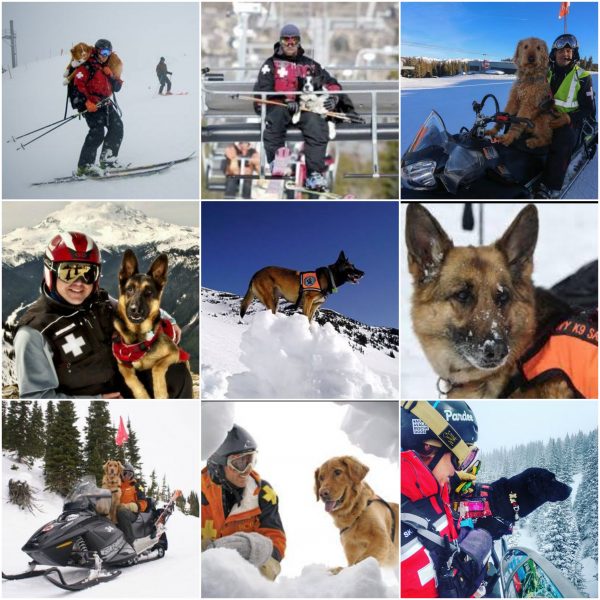We’re coming out of winter, so it’s hard to imagine that in some parts of the country, they’re still on guard for avalanches, and dogs are a huge part of that. The concept of using a dog’s superior smelling skills to locate buried people came to the Swiss army in the 1930s. Practices have been refined since then, of course, but first response to an avalanche now always includes dogs.
It takes up to three years to train an “Avy dog,” and most are six to twelve months old when they start training.They learn to track a wide area of snow-covered space in a rapid zig-zag pattern, searching for pools of human scent that rise up above the snow. Learning to detect human scent under snow starts with first locating their handler buried in a shallow “grave” under the snow. That’s following by learning how to locate human scented articles and people, alerting to the find (usually with a high-pitched, excited bark), then digging out the victim. Time is of the essence since someone trapped in snow has a 90 percent chance of surviving in the first 15 minutes, but after a half an hour, that drops to about 50 percent. In two hours, an avalanche victim’s survival rate drops to just 30%, and in 4 hours, to a mere 10%.
An avalanche dog can search two and a half acres in roughly 30 minutes. It would take twenty people using avalanche probes four hours to cover the same area. If the victim is still conscious,s/he will give off an especially strong scent since s/he’s likely to be sweating from panic, and that speeds things along.

Avalanche dogs are a popular feature of ski resorts where they get a lot of attention when they’re on duty (how often do you see a dog riding on a ski lift?), but like all purebred dogs, “they’re not just for show.”
A good Avy dog is one with a strong prey drive. In Norway, the most common breeds used are German Shepherd Dogs, Giant Schnauzer, Belgian Malinois and Rottweilers. The Canadian Avalanche Rescue Dog Association includes those breeds but also adds Labradors and Golden Retrievers, and Alaska’s Alyeska Patrol Avalanche Canine Program uses Nova Scotia Duck Tolling Retrievers. In Colorado, you’d also see a Border Collie and an Airedale.
Images of assorted Avy dogs not necessarily in order, all found on Pinterest and happily credited upon receipt of information: From Heavenly – Lake Tahoe (a Golden Retriever), from Squaw Valley (German Shepherd Dog and Belgian Malinois), from Alaska’s Alyeska Patrol Avalanche Canine Program (Nova Scotia Duck Tolling Retrievers), and in Colorado, a Border Collie and an Airedale (working at Snowmass in Aspen).
